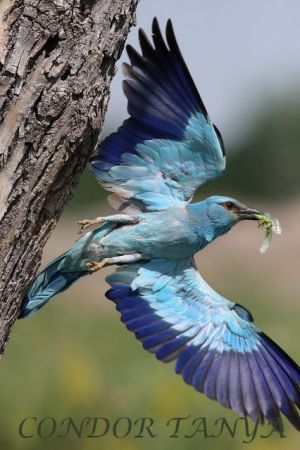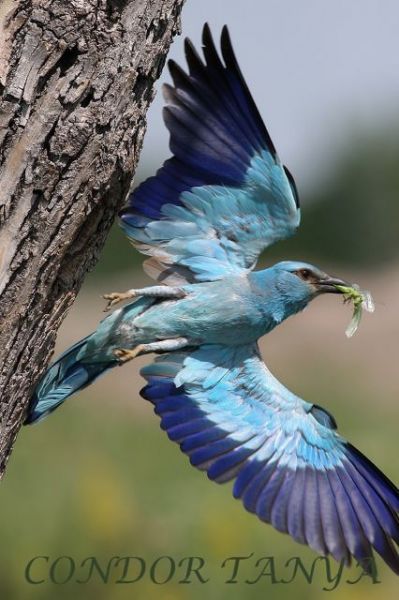Africa / Ghana
Butterfly holiday in Western Africa
Ghana, 14 days + 4 days extension
Our holiday is an exciting tropical butterfly tour in one of the friendliest countries in the world. Ghana has 928 butterfly species, more yet to be found. It is nearly double as many as in entire Europe and is the highest in West Africa apart from the Oban Hills at the easternmost part of Nigeria and western Cameroon. 4/5 of the total species are confined to rainforest or high forest areas, which are amongst the most endangered tropical habitats, threatened by both legal and illegal logging and open pit mining. With this tour we try to help the conservation of the remaining rainforests as important butterfly areas through organized nature tours, with raising awareness for butterfly conservation internationally and generate income for the local communities with using their accommodations and giving jobs for local guides.
This tour is organized in collaboration with Butterfly Conservation Society, Ghana (BCGHANA). Professional tour leaders are provided by Ecotours (and/or other partner agencies), while technical guides are from BCGHANA and local communities or conservation authorities. The quality of accommodations varies according to the location of the destination. We usually choose our hotels with the highest comfort available, but while on field we prefer to choose inns or guesthouses managed by local communities to help the management and maintenance of the community based conservational areas (e.g. Boabeng-Fiema Monkey Sanctuary) and usually they situate very close to the visited sites. ECOTOURS is a responsible company, committed oneself helping sustainable conservation with ecotourism activities; therefore 10% of the profit is paid as donation for BCGHANA's conservational projects.
Suggested dates
January-April
http://www.ecotours.hu/calendar
Price
Ask for the actual price.
Our price includes:
- all travel as noted in the itinerary except optional programmes (an air conditioned bus with driver will accompany us throughout the whole tour).
- all accommodation, based on shared rooms (most rooms are twin bedded). At most locations there are single rooms as well for extra charge. Please ask for a single room at the time of booking.
- 3 meals per day: generally breakfast at the accommodation, packed lunch and dinner consists of at least two courses.
- services of the leader(s).
- rent of local guide(s).
- entrance fees in all national parks and nature reserves.
- trip materials.
Not included:
- flights to and from Accra;
- optional programmes to places of interest and its entrance fees
- passports and visas (to obtain a Ghanaian visa may take 2 weeks in the UK, though you can get it on the same day of application in Hungary, upon an appointment with the consul, one more reason to visit Hungary)
- airport and other departure taxes
- food beyond generally 3 meals/day mentioned in the itineraries
- immunizations, (vaccination against Yellow fewer and Typhus is required, as well as Malaria prophylaxis. You might need insect repellent against mosquitoes.)
- excess baggage charges,
- telephone calls,
- alcoholic beverages,
- compulsory personal insurance
- tips etc.
Itinerary
Day 1
Arrival to Accra in the evening. In the evening we have a welcome drink, an introduction section and our professional guide will make a brief presentation about butterflies of Ghana.
Day 2-3
Early morning departure to Sagyimaase on the piedmonts of Atewa Range to visit one of the few remaining upland evergreen forests in West Africa. The area is rich in endemic species: Atewa Ciliate Blue, Western Black-Spot Ciliate Blue and Atewa Dotted Border. The Atewa Range has an estimated number of 650-700 species, including the largest African butterfly the Giant African Swallowtail, which can be seen very rarely. The range is home for lots of interesting Charaxes species, which usually stay high in the canopy. Forest Pearl Charaxes, Flame-bordered Charaxes, Common Blue Charaxes are among the commoner species, while Emerald Blue Charaxes, Euphaedra Charaxes and Peter's Demon Charaxes are rare and not easy to trap. Atewa is among the few places, where two species of orange Foresters are locally abundant: Green Orange Forester and Perseis Mimic Forester. Atewa holds the westernmost occurrence of the rare White-Tipped Bush Brown. Noble Bush Brown and Ignoble Bush Brown are among the most graceful butterflies of Africa.
Day4
We continue to a very scenic place called Bobiri Forest, the only designated conservation area for butterflies in Ghana. The butterfly garden around the guesthouse can attract an enormous amount of swallowtails including Giant African Swallowtail, Mocker Swallowtail, Narrow-banded Green Swallowtail, Western Yellow-banded Swallowtail together with White's Large Vagrant and Blue Vagrant. The butterfly garden also attracts a noticeable number of larger skippers: Blue Red-Eye and White Banded Red-Eye are common here, while with some luck Green-Winged Red-Eye can be seen on the flowers. Several Euphaedras can be caught with fruit baited traps, including the rare Western Blue-banded Forester, the more common Janetta Themis Forester and Ghana Ceres Forester. Other species also visit the traps; Common Palm Forester and Sophus Forester are common visitors, while Western White-tipped Bush Brown is a rare species. Common Giant Epitola and Libert's Giant Epitola stay high only to show their bright iridescent blue colour, while the magnificent Large Tiger Blue sits on tendrils to hide one of the most beautiful blue colour on butterflies. Optional moth trapping is also available upon request.
Day5-6
Early in the morning we walk around the Butterfly Garden to find more skippers which are attracted by flowers. The morning is also good to find displaying male Epitoliini. We also hope to find some of the commoner Lipteniini as well. Western Pearly and Common Pearly are regularly found around the guesthouse, while Theodor's Eresina is also present. The most unexpected catch would be Unexpected Tiger Blue, while the highlight is definitely the large number of Charaxes in the traps including Lesser Blue Charaxes and hopefully the rare Hildebrandt's Charaxes.
Day7
Early morning we depart to Kakum National Park to arrive in the afternoon to Hans Cottage Botel. It is an excellent place for ecotourists with wooden cottages built on an artificial lake system with crocodiles and good birdlife in the surrounding environment.
Day8
We have a full day excursion to Kakum National Park. We climb the world-famous Canopy Walkway where we have the chance to watch canopy butterflies. Afterwards we take a walk in the Kakum Forest to see many of the African Fairy Hairstreaks including Kakum Fairy Hairstreak. We hope to see lots of Acraea dancing during the walk, but the number of species is just impossible to list, as there are above 500 species recorded here!
Kakum is also said to be one of the last refuges for the Forest Elephant, but it is like a ghost, everyone heard about them, but nobody has seen any...
Day9
In the morning we visit a different part of the Kakum Forest, where we hope to see some of the African Gliders such as Scalloped Yellow Glider, Common Yellow Glider, Western Red Glider and the rare Auberger's Yellow Glider.
In the afternoon we travel to Cape Coast to visit the slavery museum in Fort Cape Coast, which once was the busiest slave trade centre in West Africa. In the evening we continue to Accra where we overnight.
Day10
We travel to the Volta Region with a stop at Shai Hills Nature Reserve. On the rocky outcrops of the hills we find some of the remaining dry open forests. The butterflies here are typical savannah species. Here we can meet some of the commonest and ubiquitous African species such as Citrus Swallowtail, Mocker swallowtail, the African Emigrant and the rare Large Striped Swordtail. A real West African endemic skipper the Western Blue Policeman is also found in the area. Small blue lyceanids will be seen flying along short grass patches, the commoner species are African Grass Blue, Tiny Grass Blue and Smokey Bean Cupid. The sight of the graceful African Monarch is always a delight, it is often seen flying around Milkweed plants throughout Africa. Other natural attractions are Olive Baboons, a number of antelopes and the cave of fruit bats. Shai Hills is also home for a good number of birds.
Lunch and refreshments will be organized at the restaurant at Shai Hills, after the fieldtrip the group will continue to Hohoe.
Day11
We make a full day trip to Wli Waterfalls at Agumatsa Nature Reserve. The area is one of the last remaining patches of the Togo Mountains' once extensive forests, with a bunch of endemic butterfly species. One of the most beautiful butterflies is Volta Swallowtail. Common Orange Forester is mostly found in fruit-baited traps. Imperial Charaxes and Green-Veined Charaxes are rare species.
The waterfall itself a very scenic place. There is a colony of fruit-feeding bats on the rocks around the waterfall, the population is estimated to be 500.000 bats.
Day12
On the way to Aburi Botanical Gardens we stop at few butterfly spots to find more of the special Volta species including Large Orange Playboy and Nigerian Pierid Blue. We also stop at Tofi Atome, a monkey sanctuary in the Volta Region, where there's a chance to see the nominate subspecies of Mona Monkey. Evening arrival to Aburi Botanical Gardens.
Day13
We will spend the entire day within the boundaries of the Aburi Botanical Gardens, home to more than 300 butterfly species, including many rarities of the Lipteninae subfamily of Blues. Incredible Sapphire Gem and Nigerian Sapphire Gem are among the rarely seen blue species in West Africa, they mostly fly high up in the canopy level. The botanical garden is a refuge for many other Lipteninae in Ghana, since all the surrounding forests have been destroyed not so long ago. The Western Tiger Blue is among the largest blues in West Africa and is also present in the park. From the smaller but not less beautiful Epitoliini Crowley's Epitola, Silvery Epitola, Roche's Epitola, Obscure Epitola, Greasy Epitola, Common Flash, Gerina Epitola, Black-wing Epitola and Black-Square Epitola were seen in the gardens. The African Giant Skipper is also present, the sight of the moderately slow skipping flight is a real delight. Savannah or Aburi Dotted Border was named after the Gardens.
Day14
The final day is a relaxing day, with good opportunities to see new butterfly species in the Gardens. Early afternoon we depart to Accra International Airport.
Those who stay for the extension spend the night in Accra.
Extension to Ankasa Conservation Area
Day15-19
We spend 4 days in Ankasa Conservation Area at the south-western corner of Ghana, where we hope to include lots of rare wet forest butterflies to our list. The Ghost is a small, silvery-white butterfly, which has a very weak flight. Hadrian's White Charaxes and Noble Charaxes are rarities in West Afrcia, though they were consequently recorded from Ankasa. The area is a real paradise for understorey butterflies. We can expect lots of Nymph species including Veronica's Nymph and Ankasa is also rich in Euphaedra species. On the last day we travel back to Accra Airport for our flight home in the late afternoon.


























